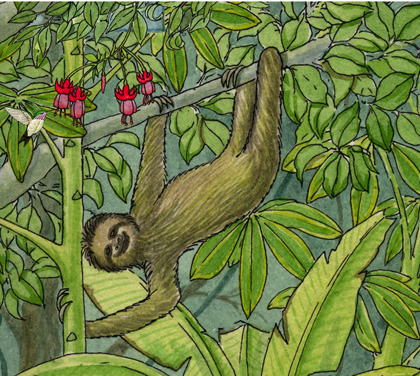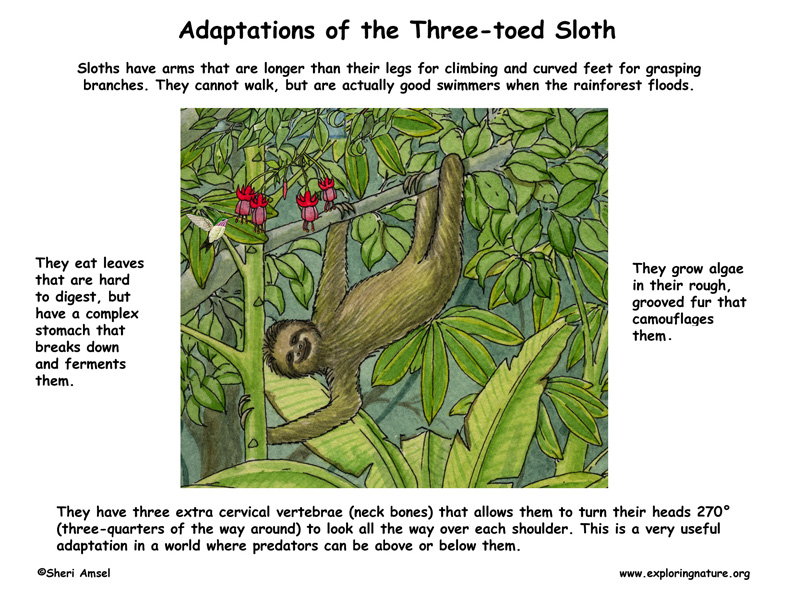

Adaptation in a population of living things happens as a result of an adaptive trait. This is any inheritable trait that increases it’s survival rate so that it can live longer, reproduce longer, and have more offspring (that also have that trait). Adaptive traits can improve animals find food, make a safer home, escape predators, survive cold or heat or lack of water.
Sloths are so well adapted, that despite being slow, they have thrived in their habitat. They are built perfectly for life in the trees (arboreal) with adaptive traits such as arms that are longer than their legs and curved feet for grasping branches. They cannot walk, but are actually good swimmers when the rainforest floods.
They move slowly, but this helps them stay unseen by predators. They also grow algae in their rough, grooved fur that camouflages them further. They eat leaves that are hard to digest, but have a complex stomach that breaks down and ferments them. They have three extra cervical vertebrae (neck bones) that allows them to turn their heads 270° (three-quarters of the way around) to look all the way over each shoulder. This is a very useful adaptation in a world where predators can be above or below them. All of these physical adaptations help the three-toed sloth survive in their rainforest habitat.
For Discussion and Critical Thinking:
The three-toed sloth has adaptive traits that help it to survive in the rainforest.
1. Name two of the three-toed sloth’s adaptive traits and how they help it avoid predators:
2. Name two of the three-toed sloth’s adaptive traits and how they help it get enough to eat:
3. How do you think the three-toed sloth’ can survive without being able to walk?
When you research information you must cite the reference. Citing for websites is different from citing from books, magazines and periodicals. The style of citing shown here is from the MLA Style Citations (Modern Language Association).
When citing a WEBSITE the general format is as follows.
Author Last Name, First Name(s). "Title: Subtitle of Part of Web Page, if appropriate." Title: Subtitle: Section of Page if appropriate. Sponsoring/Publishing Agency, If Given. Additional significant descriptive information. Date of Electronic Publication or other Date, such as Last Updated. Day Month Year of access < URL >.
Amsel, Sheri. "Adaptations of the Three-toed Sloth" Exploring Nature Educational Resource ©2005-2024. April 4, 2024
< http://www.exploringnature.org/db/view/1684 >

